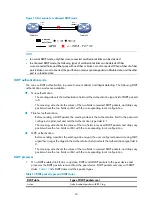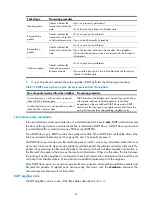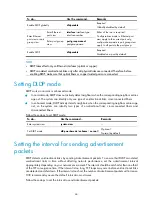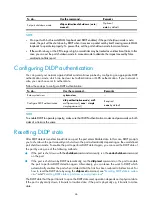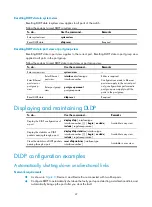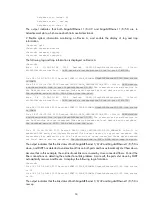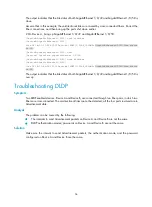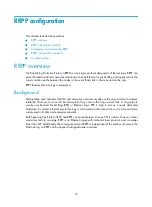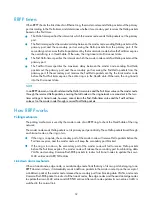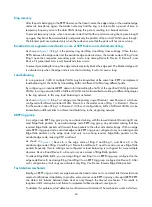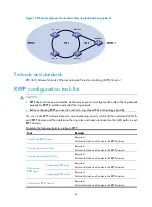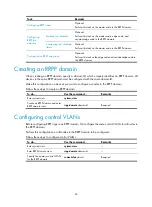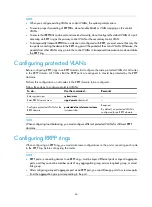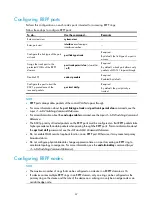
54
The output indicates that the link status of both GigabitEthernet 1/0/49 and GigabitEthernet 1/0/50 is
down.
Assume that in this example, the unidirectional links are caused by cross-connected fibers. Correct the
fiber connections, and then bring up the ports shut down earlier.
# On Device A, bring up GigabitEthernet 1/0/49 and GigabitEthernet 1/0/50:
[DeviceA-GigabitEthernet1/0/50] undo shutdown
[DeviceA-GigabitEthernet1/0/50]
%Jan 18 18:22:11:698 2010 DeviceA IFNET/3/LINK_UPDOWN: GigabitEthernet1/0/50 link status
is UP.
[DeviceA-GigabitEthernet1/0/50] quit
[DeviceA] interface gigabitethernet 1/0/49
[DeviceA-GigabitEthernet1/0/49] undo shutdown
[DeviceA-GigabitEthernet1/0/49]
%Jan 18 18:22:46:065 2010 DeviceA IFNET/3/LINK_UPDOWN: GigabitEthernet1/0/49 link status
is UP.
The output indicates that the link status of both GigabitEthernet 1/0/49 and GigabitEthernet 1/0/50 is
now up.
Troubleshooting DLDP
Symptom
Two DLDP-enabled devices, Device A and Device B, are connected through two fiber pairs, in which two
fibers are cross-connected. The unidirectional links cannot be detected; all the four ports involved are in
Advertisement state.
Analysis
The problem can be caused by the following.
•
The intervals to send Advertisement packets on Device A and Device B are not the same.
•
DLDP authentication modes/passwords on Device A and Device B are not the same.
Solution
Make sure the interval to send Advertisement packets, the authentication mode, and the password
configured on Device A and Device B are the same.

